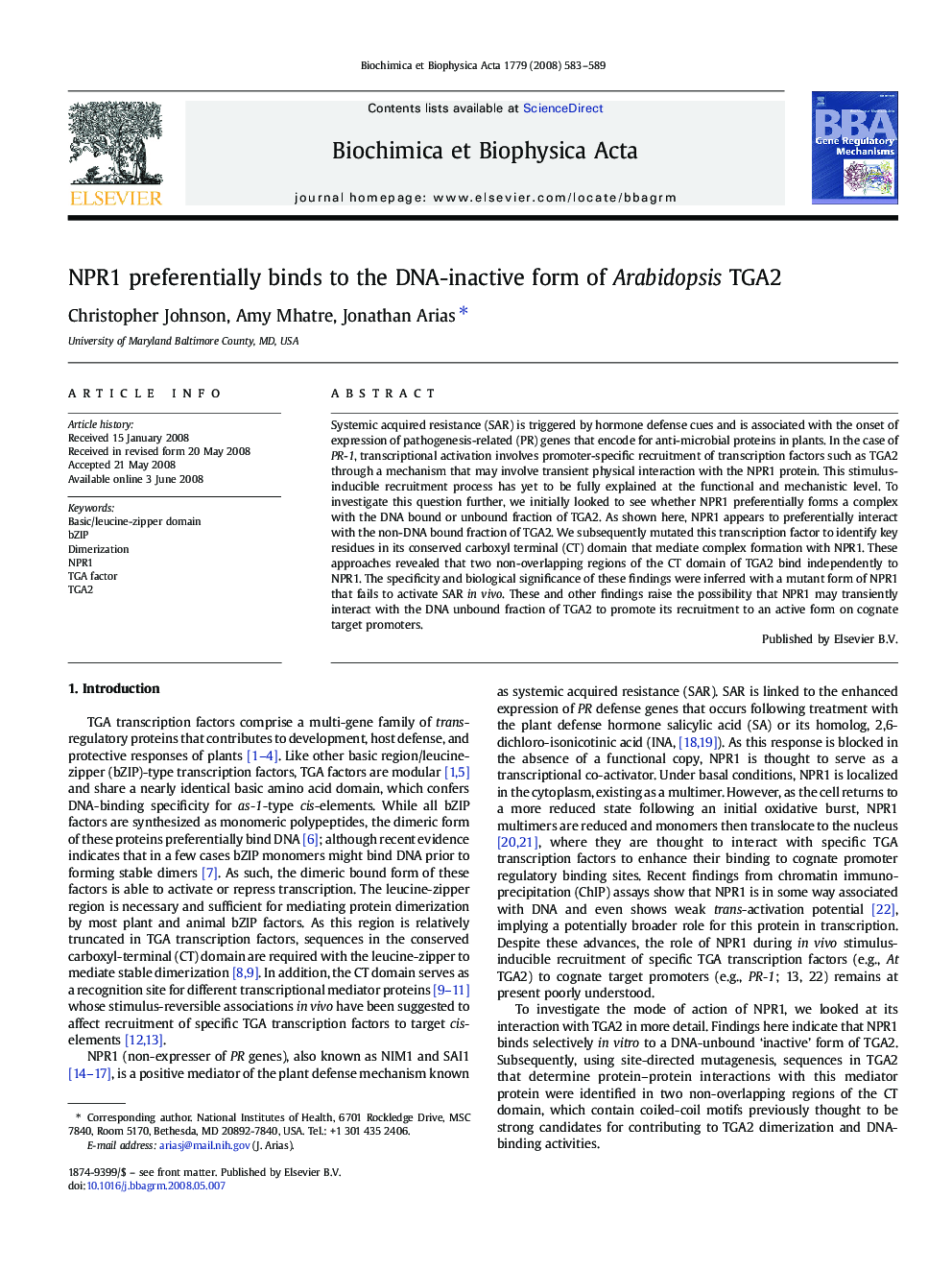| Article ID | Journal | Published Year | Pages | File Type |
|---|---|---|---|---|
| 1947025 | Biochimica et Biophysica Acta (BBA) - Gene Regulatory Mechanisms | 2008 | 7 Pages |
Systemic acquired resistance (SAR) is triggered by hormone defense cues and is associated with the onset of expression of pathogenesis-related (PR) genes that encode for anti-microbial proteins in plants. In the case of PR-1, transcriptional activation involves promoter-specific recruitment of transcription factors such as TGA2 through a mechanism that may involve transient physical interaction with the NPR1 protein. This stimulus-inducible recruitment process has yet to be fully explained at the functional and mechanistic level. To investigate this question further, we initially looked to see whether NPR1 preferentially forms a complex with the DNA bound or unbound fraction of TGA2. As shown here, NPR1 appears to preferentially interact with the non-DNA bound fraction of TGA2. We subsequently mutated this transcription factor to identify key residues in its conserved carboxyl terminal (CT) domain that mediate complex formation with NPR1. These approaches revealed that two non-overlapping regions of the CT domain of TGA2 bind independently to NPR1. The specificity and biological significance of these findings were inferred with a mutant form of NPR1 that fails to activate SAR in vivo. These and other findings raise the possibility that NPR1 may transiently interact with the DNA unbound fraction of TGA2 to promote its recruitment to an active form on cognate target promoters.
